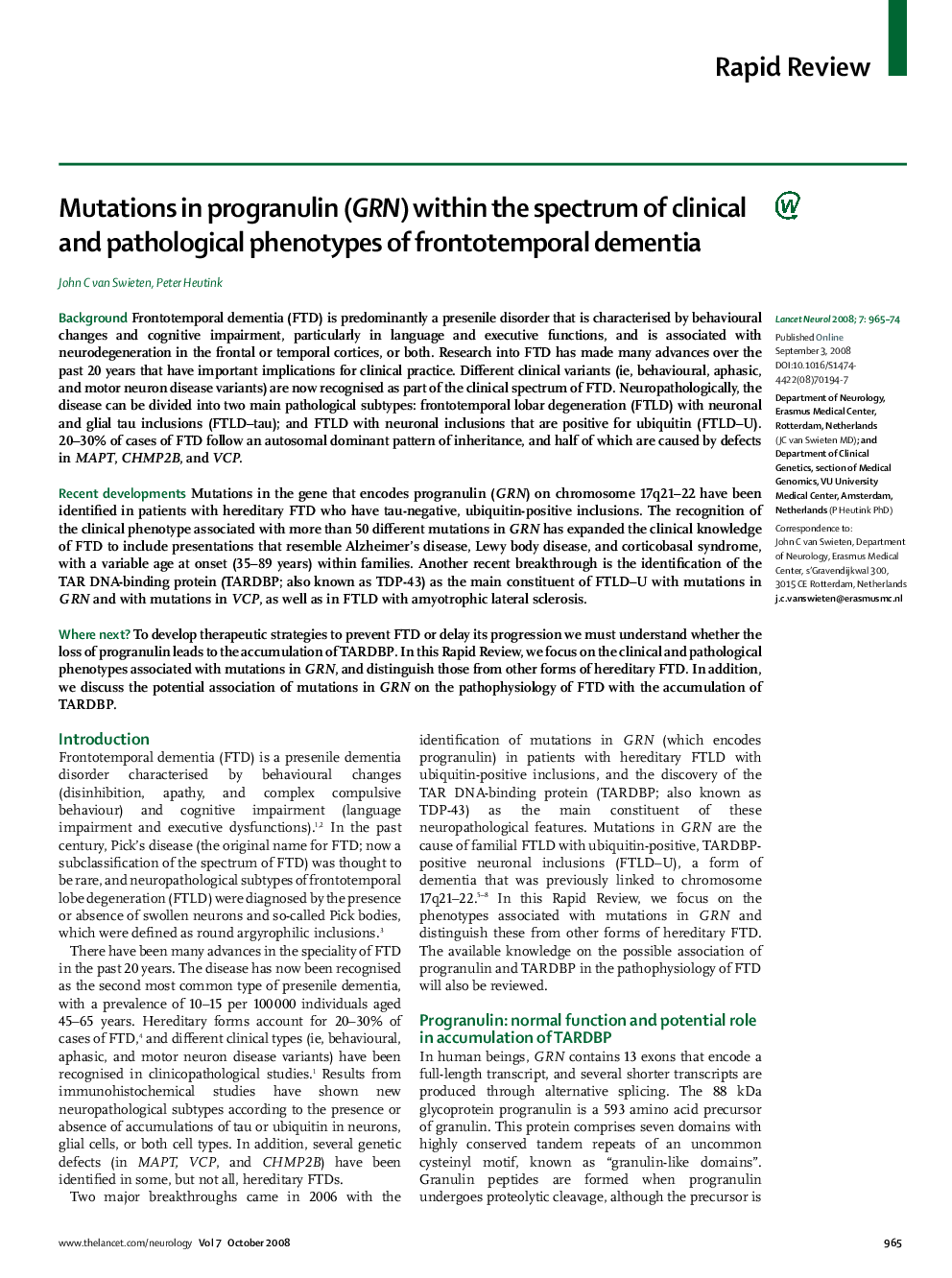| کد مقاله | کد نشریه | سال انتشار | مقاله انگلیسی | نسخه تمام متن |
|---|---|---|---|---|
| 3067520 | 1188153 | 2008 | 10 صفحه PDF | دانلود رایگان |

SummaryBackgroundFrontotemporal dementia (FTD) is predominantly a presenile disorder that is characterised by behavioural changes and cognitive impairment, particularly in language and executive functions, and is associated with neurodegeneration in the frontal or temporal cortices, or both. Research into FTD has made many advances over the past 20 years that have important implications for clinical practice. Different clinical variants (ie, behavioural, aphasic, and motor neuron disease variants) are now recognised as part of the clinical spectrum of FTD. Neuropathologically, the disease can be divided into two main pathological subtypes: frontotemporal lobar degeneration (FTLD) with neuronal and glial tau inclusions (FTLD–tau); and FTLD with neuronal inclusions that are positive for ubiquitin (FTLD–U). 20–30% of cases of FTD follow an autosomal dominant pattern of inheritance, and half of which are caused by defects in MAPT, CHMP2B, and VCP.Recent developmentsMutations in the gene that encodes progranulin (GRN) on chromosome 17q21–22 have been identified in patients with hereditary FTD who have tau-negative, ubiquitin-positive inclusions. The recognition of the clinical phenotype associated with more than 50 different mutations in GRN has expanded the clinical knowledge of FTD to include presentations that resemble Alzheimer's disease, Lewy body disease, and corticobasal syndrome, with a variable age at onset (35–89 years) within families. Another recent breakthrough is the identification of the TAR DNA-binding protein (TARDBP; also known as TDP-43) as the main constituent of FTLD–U with mutations in GRN and with mutations in VCP, as well as in FTLD with amyotrophic lateral sclerosis.Where next?To develop therapeutic strategies to prevent FTD or delay its progression we must understand whether the loss of progranulin leads to the accumulation of TARDBP. In this Rapid Review, we focus on the clinical and pathological phenotypes associated with mutations in GRN, and distinguish those from other forms of hereditary FTD. In addition, we discuss the potential association of mutations in GRN on the pathophysiology of FTD with the accumulation of TARDBP.
Journal: - Volume 7, Issue 10, October 2008, Pages 965–974